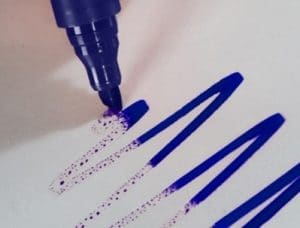For years, manufacturers have implemented a conventional method of testing surface energy using a solution called dyne inks. Dyne ink, when applied to a surface, can reveal the surface's adhesion potential. But there's an inherent problem with the inks themselves...
A Brief Explanation of Dyne Inks

Dyne inks operate under the principle of surface energy or wetting, a phenomenon that correlates to the potential adhesive ability of a surface. When a substance comes in contact with a new material, the substance can show information on the surface energy of the material. The dyne ink will react depending on the surface energy.
When applying dyne ink, it will either bead up or spread out. The examiner must watch for characteristics of beading up or spreading out. If the ink beads up, that indicates a lower surface energy on the material than the ink. If the ink spreads out in a continuous film, the material has a higher surface energy than the ink.
Limitations of Dyne Inks
Typical dyne ink uses include research, product and process development, and monitoring. The portability of dyne allows for use on the factory floor or in the lab, but this method is very limited.
What are the drawbacks?
- The ink determines a pass/fail level, and these results are based on the user's interpretation of how the ink reacts to the surface, making the process very subjective (enormous room for error and debate)
- Dyne inks contaminate the material it's used on, so a sample of the material or product must be used instead of the final product (slow to measure).
- The chemicals can contain teratogenic elements which are potentially harmful to the user. (dangerous)
Long story short, this method fails to determine an objective, quantifiable surface measurement.
Get hands-on with your surface cleanliness with the Surface Analyst 5001.
It should be obvious why this is a problem, but we'll answer the question of "Why?" anyway:
It is imperative that manufacturers confidently know the surface energy of their parts to predict the surface's ability to paint, seal, coat, print, bond, or seal.
Without knowing this information, manufacturers are opening up their products and processes to inconsistency, failure, waste, and even recalls.
To find out more about an alternative to costly dyne solution tests, download the ebook "What is Dyne Testing? Enhance Precision and Effectiveness with the Ultimate Alternative to Dyne Testing."








